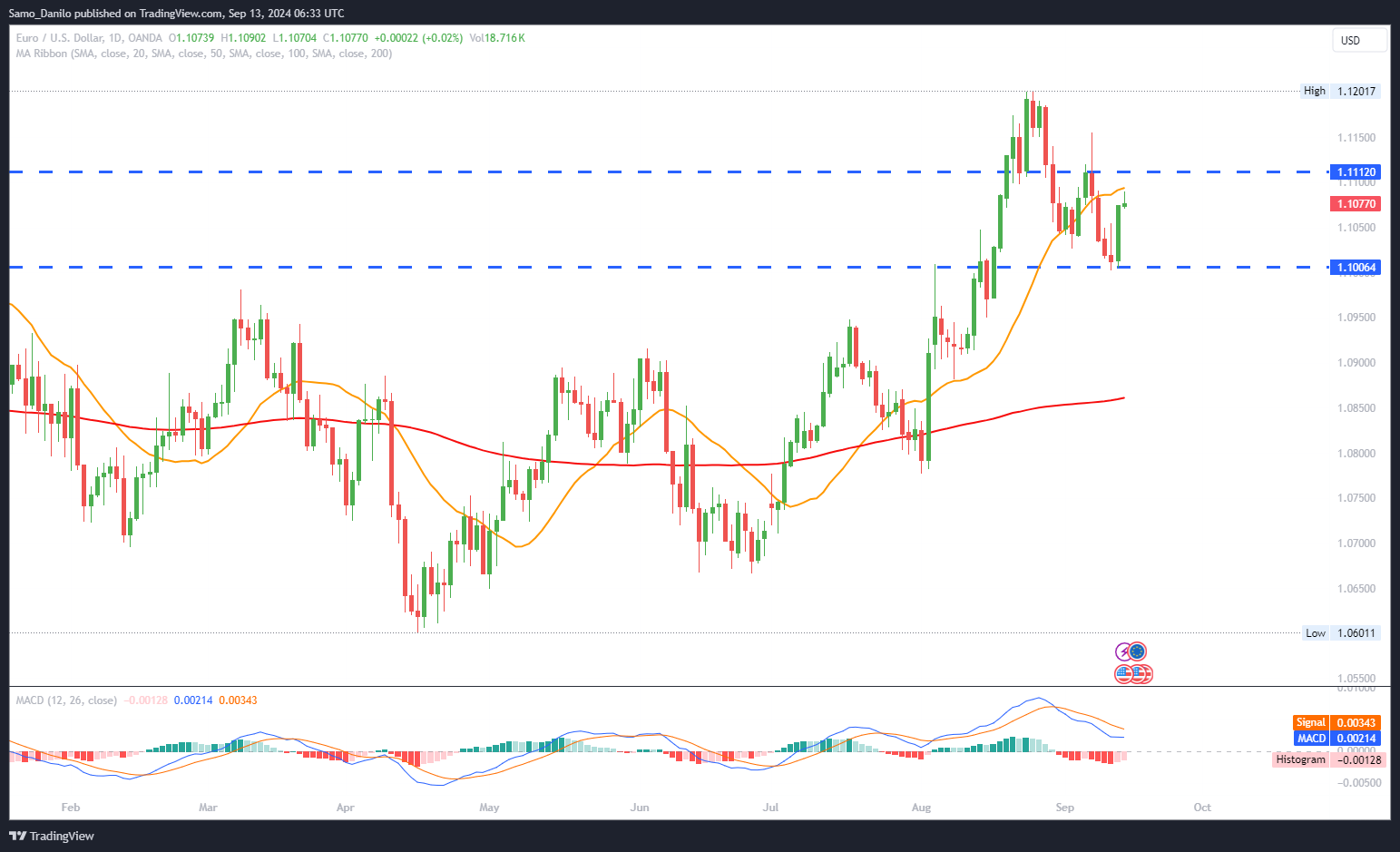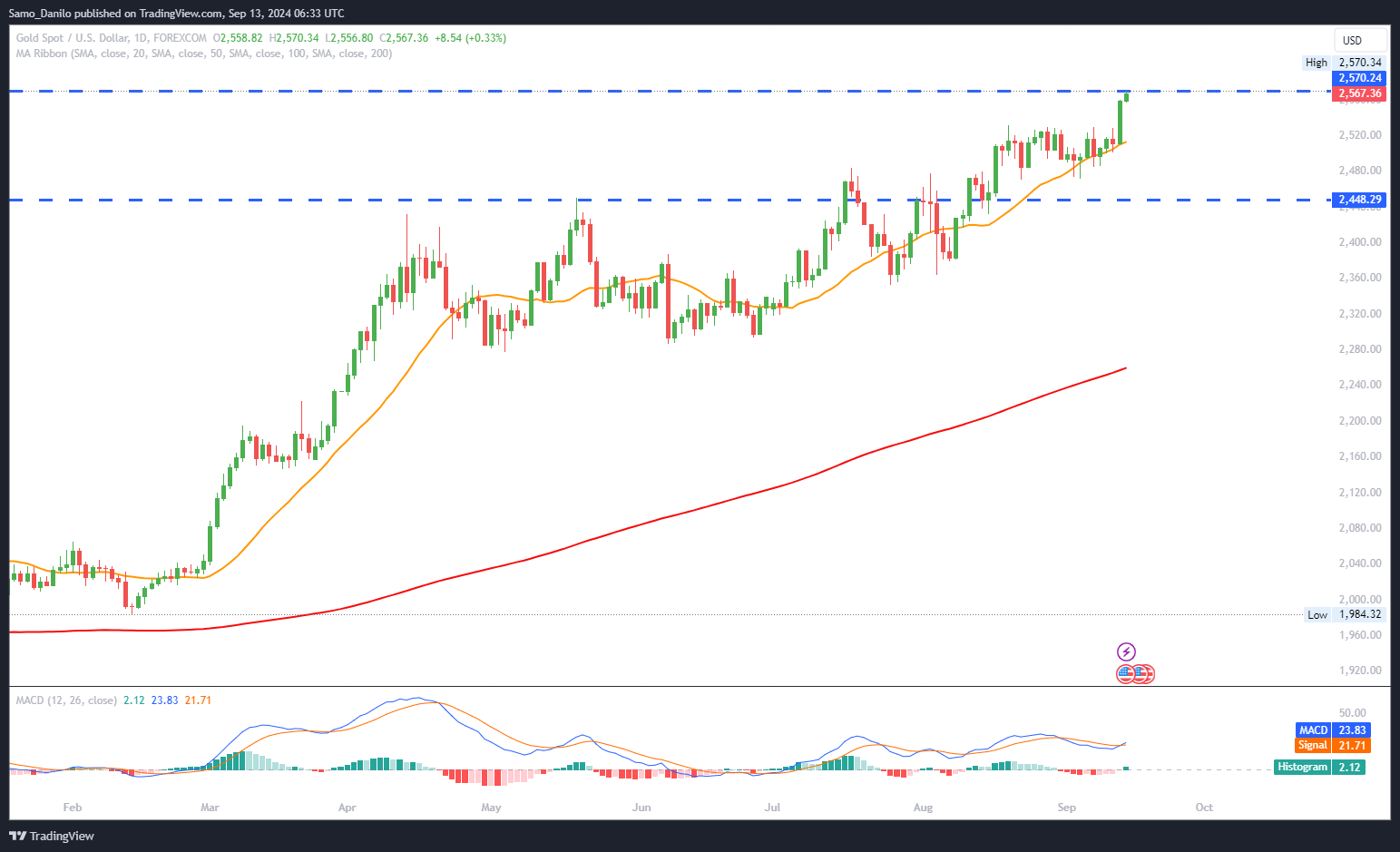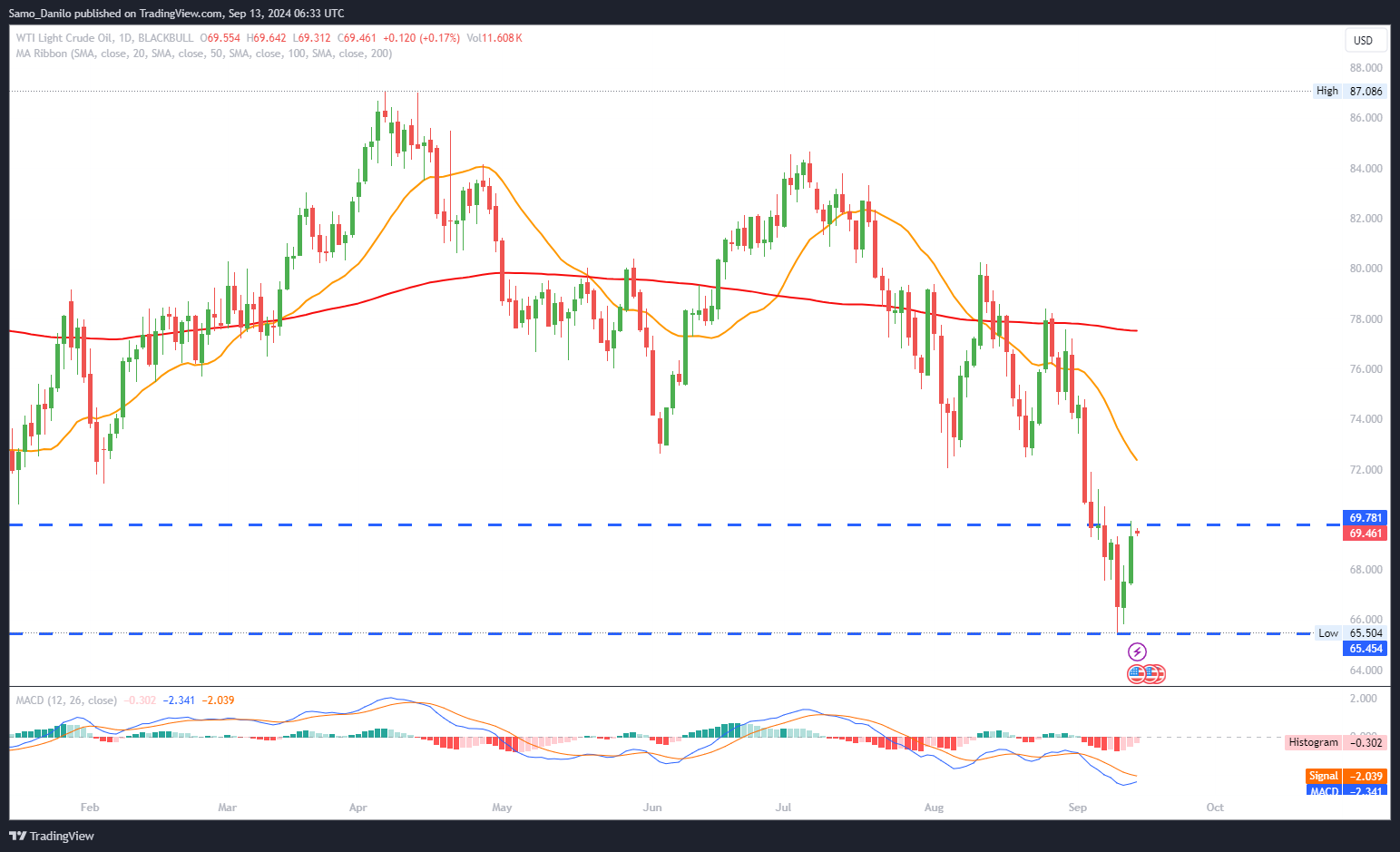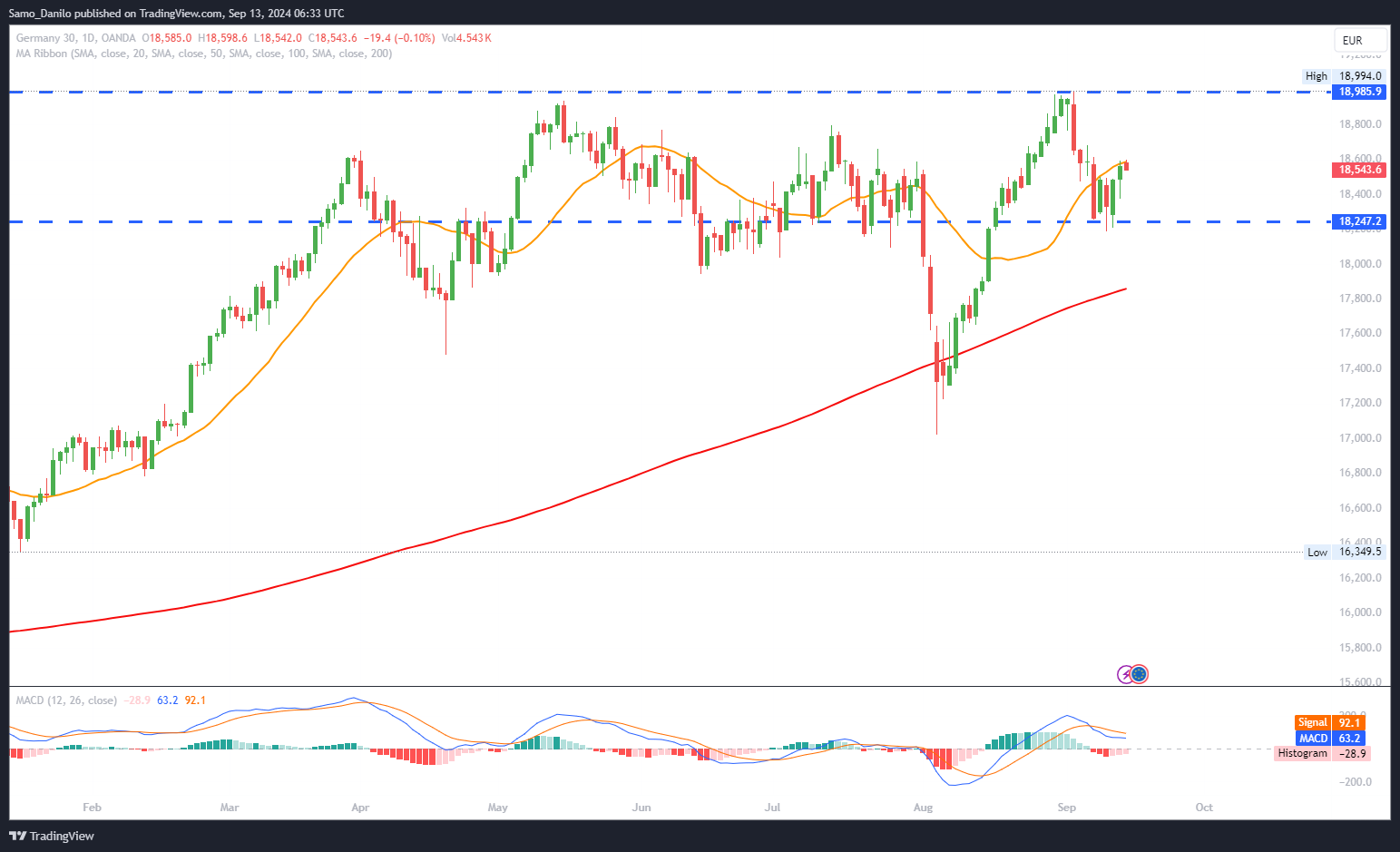EURUSD
- EUR/USD Rebound: The EUR/USD pair extends its recovery from the 1.1000 psychological support level, marking a second consecutive day of gains on Friday. The bounce comes after the pair had recently dipped to a four-week low, but the recovery has attracted follow-through buying interest as investors assess recent developments in the Eurozone and the US.
- ECB Cuts Rates: On Thursday, the European Central Bank (ECB) announced a 25- basis point cut, lowering the Main Refinancing Operations Rate to 4.0%. This move was widely expected and helped stabilize the Euro as market participants had already priced in the policy easing. However, the ECB did not provide specific forward guidance on future rate decisions, which has supported the Euro by leaving some uncertainty over the next steps.
- Nagel’s statement: Adding to the positive sentiment for the Euro, ECB policymaker and Bundesbank President Joachim Nagel expressed optimism in an interview on Friday, stating that core inflation in the Eurozone is moving in the "right direction." He indicated that the ECB's inflation goal could be reached by the end of next year, further bolstering the shared currency’s outlook.
- US PPI Data: Across the Atlantic, the US Producer Price Index (PPI) report for Thursday came in weaker than expected. This has increased market bets on a more significant interest rate cut from the Federal Reserve (Fed) at its upcoming meeting. A softer inflation reading could prompt the Fed to cut rates more aggressively, weighing on the US Dollar and providing support for the EUR/USD pair.
Closing statement: The EUR/USD pair is benefiting from a mix of dovish central bank decisions in both the Eurozone and the United States. The ECB’s rate cut, and lack of specific guidance have supported the Euro, while expectations for a larger Fed rate cut next week have weakened the US Dollar, providing additional tailwinds for the pair. With further data releases and central bank actions anticipated in the coming days, the EUR/USD remains poised for potentially volatile trading sessions, with 1.1000 acting as a key psychological support level.
GBPUSD
- GBP/USD Extends Recovery: The GBP/USD pair continues its recovery for the second consecutive day, moving further away from the 1.3000 psychological level, which marked a three-week low on Wednesday. This uptick in momentum signals renewed buying interest, as the pair gains traction amid mixed data from both the UK and the US.
- US PPI Data: The US Producer Price Index (PPI) inflation data released on Thursday landed near median market estimates, offering little clarity on the trajectory of US inflation. As a result, it failed to significantly impact the US Dollar, keeping the GBP/USD pair's recovery intact.
- US Jobless Claims: Meanwhile, US Initial Jobless Claims for the week ending September 6 rose to 230K, in line with market expectations and slightly higher than the previous week's revised figure of 228K. This slight uptick indicates a moderate softening in the US labour market, which could play into expectations for the Federal Reserve’s upcoming monetary policy decisions.
- Fed Cut Rate Expectations: The Federal Reserve is widely anticipated to begin its rate- cut cycle with a 25-basis point reduction in late 2024, which has kept the US Dollar under pressure. These expectations are contributing to the broader recovery in GBP/USD.
- UK and US Data Awaited: On the UK side, traders will look out for the Consumer Inflation Expectations report on Friday, which could provide fresh insights into domestic inflation trends. In the US, the focus will shift to the Michigan Consumer Sentiment Index for September, which may offer clues on US consumer confidence and spending trends, further influencing Fed policy expectations and the performance of the GBP/USD pair.
| SMA (20) | Rising |
|
|
| RSI (14) | Slightly Falling |
| |
| MACD (12, 26, 9) | Slightly Falling |
|
Closing statement: The GBP/USD pair's recovery from recent lows reflects a combination of mixed US economic data and expectations of a Fed rate cut. As markets digest these developments, near-term price action will likely hinge on upcoming economic reports from both the UK and US. With 1.3000 serving as key psychological support, the pair may continue to build positive momentum, especially if the Fed maintains a dovish tone going forward.
GOLD
- Gold Price New All-Time High: Gold (XAU/USD) reached a new all-time high near $2,570, driven by a weaker US Dollar and renewed demand for safe-haven assets. The precious metal continues to benefit from uncertainty surrounding the US Federal Reserve’s monetary policy, with traders leaning towards expectations of a rate cut.
- US PPI Data: The US Producer Price Index (PPI) data for August came in hotter than expected, rising 0.2% MoM, above the anticipated 0.1% increase. Core PPI, excluding food and energy, also rose 0.3%, outpacing the 0.2% consensus. On an annual basis, the headline PPI increased by 1.7%, while core PPI (excluding food, energy, and trade) rose by 3.3%. These figures reflect persistent inflationary pressures, adding complexity to the Fed’s rate-cut decision.
- Fed’s Rate Cut Dilemma: Disappointing US economic data and a Wall Street Journal article discussing the Federal Reserve's rate cut dilemma have fueled bets on a potential jumbo rate cut at the upcoming September Fed meeting. This has further weighed on the US Dollar, increasing the appeal of gold as an alternative investment.
- ECB Rate Cut: The US Dollar also faced headwinds after the European Central Bank (ECB) cut rates on Thursday. Despite this, ECB President Christine Lagarde tempered expectations of additional rate cuts in the near future, giving a boost to the Euro and adding pressure on the USD, which in turn supported gold prices. Caution Ahead of Fed Meeting: Gold buyers have become more cautious as they await next week’s crucial Fed policy meeting. As markets prepare for a potential rate cut, there could be a period of repositioning, which might lead to a corrective decline in gold prices. Heading into the weekend, traders are likely to tread carefully, anticipating further volatility tied to the Fed’s decision.
| SMA (20) | Rising |
|
|
| RSI (14) | Rising |
|
|
| MACD (12, 26, 9) | Slightly Rising |
|
Closing statement: XAU/USD continues to rise on a mix of weaker USD and heightened rate-cut expectations from the Fed. However, caution may prevail in the short term as traders reposition ahead of the Fed policy meeting next week. Should the Fed signal a more aggressive rate cut, gold prices may see further upside, with $2,570 acting as the new psychological resistance level.
CRUDE OIL
- WTI Current Trading: West Texas Intermediate (WTI) crude oil prices continue to hold gains for the third consecutive day, trading near $69.30 during the Asian session on Friday. The ongoing rise in WTI prices is largely attributed to supply disruptions caused by Hurricane Francine, which forced evacuations of platforms and interrupted oil production in the US Gulf of Mexico.
- Hurricane Francine’s Impact: Hurricane Francine made landfall on Wednesday along the Louisiana coast, leading to significant output disruptions in one of the world’s major oil-producing regions. The evacuation of production platforms and halting of operations have reduced supply, providing upward momentum for oil prices despite underlying demand concerns.
- OPEC and IEA Demand Forecasts: Both the Organization of Petroleum Exporting Countries (OPEC) and the International Energy Agency (IEA) lowered their oil demand growth forecasts this week. The downward revision comes amid growing economic challenges in China, the world’s largest oil importer. The slowdown in China’s economy, combined with weaker industrial activity, is raising concerns about lower- than-expected demand for crude oil.
- Weak US Demand: Adding to the demand worries, US gasoline and distillate futures hit multi-year lows this week. Analysts have highlighted weaker-than-expected demand in the United States, the world's largest consumer of petroleum. Despite the supply-side disruptions caused by Hurricane Francine, the lack of robust demand from both China and the US has kept a lid on oil price gains.
- Key Data Releases: As the week draws to a close, end-of-week flows could play a crucial role in crude oil price action. Market participants are also watching closely for the release of the US Consumer Sentiment and Inflation Expectations data, which could influence market sentiment and crude oil demand expectations moving forward.
| SMA (20) | Falling |
|
|
| RSI (14) | Falling |
|
|
| MACD (12, 26, 9) | Falling |
|
|
Closing statement: WTI crude oil continues to benefit from supply disruptions caused by Hurricane Francine, though upside potential may be limited due to weak demand signals from both China and the US. Traders are likely to focus on the upcoming US economic data, which could provide further direction for oil prices as the market assesses the balance between supply disruptions and demand concerns.
DAX
- Market Movers: The DAX index saw gains on Thursday, led by a 5.12% rally in Siemens Energy. SAP and Infineon Technologies also contributed to the upward momentum with gains of 2.45% and 1.32%, respectively. Meanwhile, Commerzbank extended its rally, advancing 2.18% following news of UniCredit acquiring a 9% stake, fueling speculation about a potential takeover.
- German Wholesale Prices: On the economic front, German wholesale prices fell 1.1% year-on-year in August, compared to a 0.1% decline in July. The sharp drop in wholesale prices points to weaker demand within the economy, reinforcing market expectations for a rate cut by the European Central Bank (ECB).
- US Producer Prices: Across the Atlantic, the US Producer Price Index (PPI) increased 1.7% year-on-year in August, a decline from the 2.1% rate seen in July. The slowdown in producer prices suggests weakening demand, which could temper demand-driven inflation and influence Federal Reserve policy decisions.
- ECB Rate Decision: Later Thursday, the focus will shift to the ECB’s interest rate decision and accompanying press conference. The market is widely expecting the ECB to announce a 25-basis points rate cut, which would bring the policy rate down to 4%. This decision will be crucial for market sentiment, as traders await further signals on the ECB’s approach to balancing inflation and economic growth in the Eurozone.
- Eurozone Industrial Production Data: Looking ahead, traders are closely watching the release of the Eurozone’s Industrial Production data. July’s figure is expected to show a 0.3% decline compared to a 0.1% dip in the previous month, potentially signaling further weakness in the region’s manufacturing sector.
| SMA (20) | Slightly Rising |
|
| RSI (14) | Slightly Falling |
|
| MACD (12, 26, 9) | Slightly Falling |
|
Closing statement: The DAX is benefiting from positive corporate developments, particularly in the energy and banking sectors. However, concerns over weaker demand both in Germany and the Eurozone may limit upside potential, especially with wholesale prices signalling economic softness. Market participants will closely monitor the Eurozone Industrial Production data for further clues on the health of the region's economy, alongside any broader economic implications from the ECB’s rate cuts.




